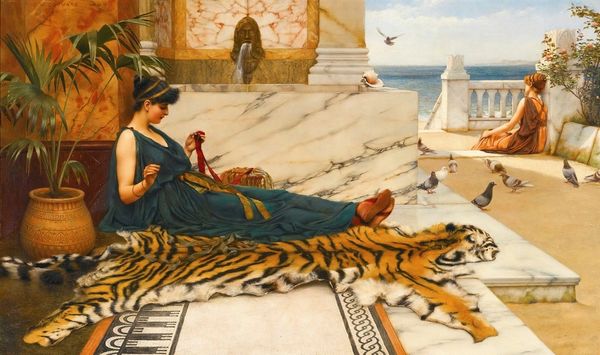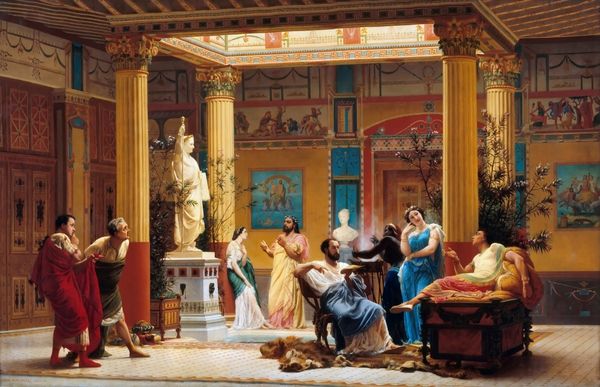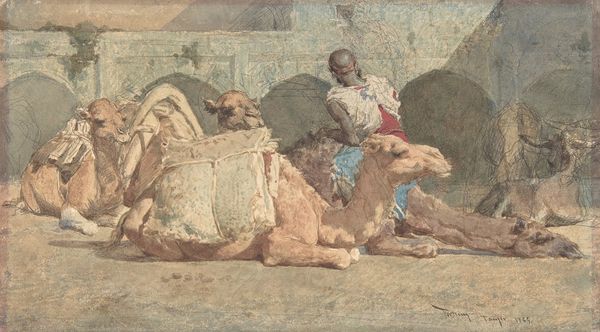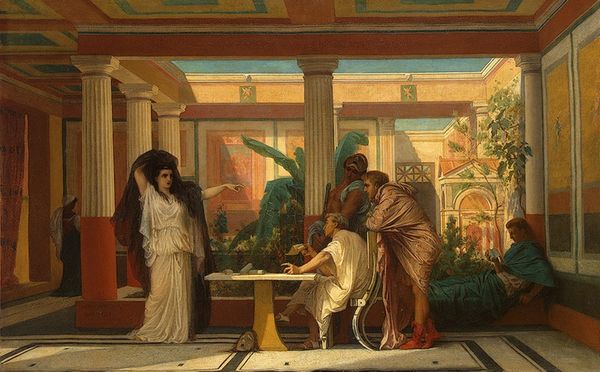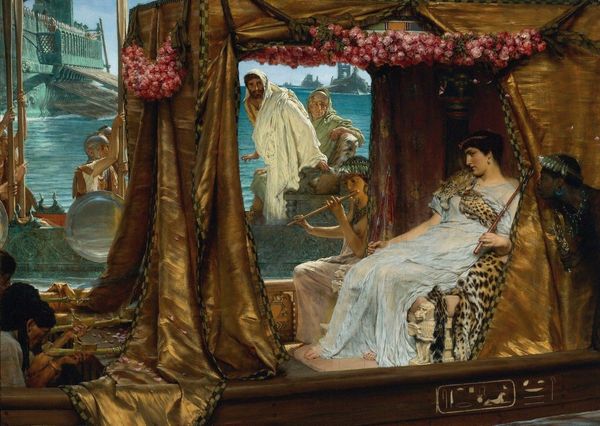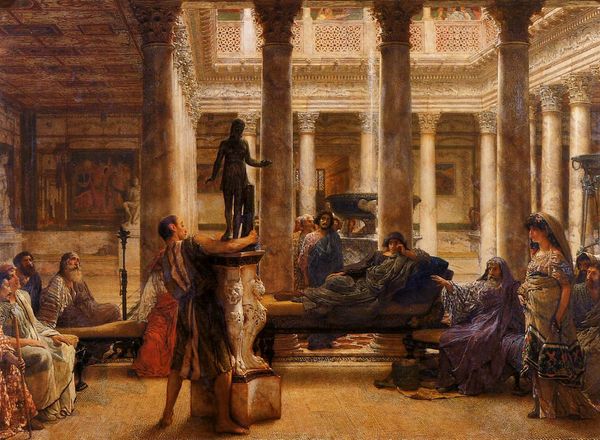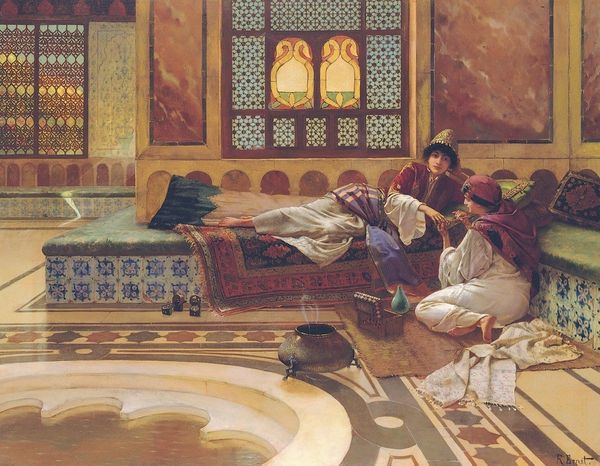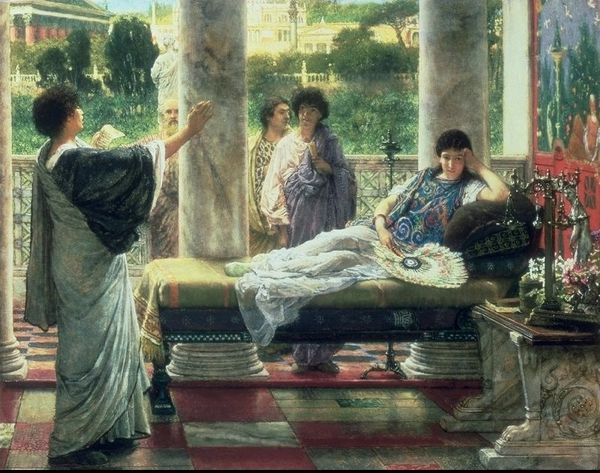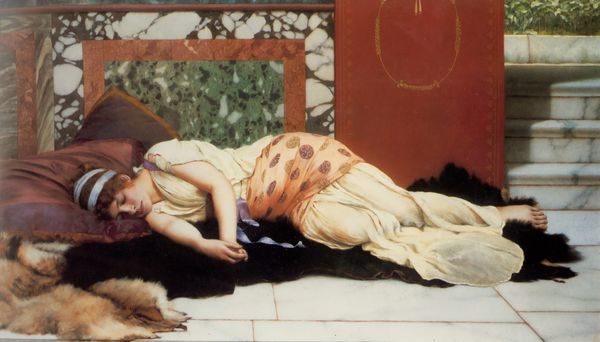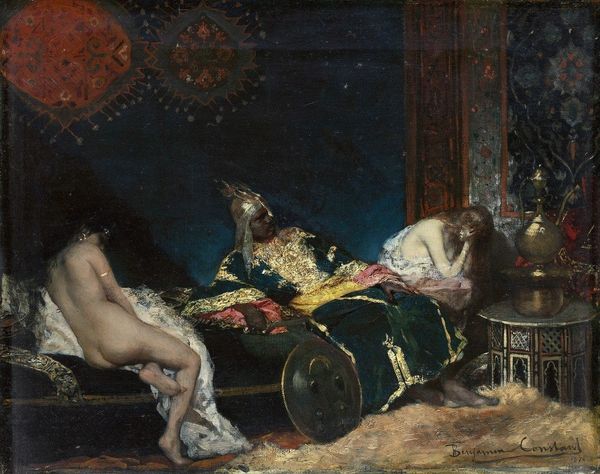
Copyright: Public Domain: Artvee
Curator: This striking image, titled "Cleopatra," was completed in 1887 by the French artist Alexandre Cabanel, known for his academic and historical paintings. He primarily worked with oil paint, as evidenced here. It seems to me that the artwork carries potent emotional baggage in the scene, but I am curious to hear your initial impressions. Editor: Well, it's quite dramatic, isn't it? A powerful queen juxtaposed against a scene of death. There’s a coldness to the overall composition despite the warm colors; a detachment highlighted by Cleopatra’s apparent lack of concern, despite the body being carried off on the left. Curator: Absolutely. Cabanel’s "Cleopatra" draws heavily from Orientalism, reflecting Europe's romanticized yet often biased view of the East. The sumptuous fabrics, the exotic animals, and the architecture itself—all contribute to a Western fantasy of Egyptian royalty, loaded with established power structures. Even in Cleopatra's jewels, the symbols speak volumes; a constant, quiet declaration of her supremacy. Editor: And what does it say that such grand decadence and privilege occur against such bleak realities? What commentary might this make about political leadership at the time this artwork was produced, reflecting similar social conditions back onto Cleopatra's own rule? It is difficult not to think about class differences here, in terms of power structures of the present and the past. Curator: It's a crucial observation. This isn’t simply a portrait, but a carefully constructed image designed to evoke specific emotions and ideas about power, luxury, and even death. It pulls Cleopatra, a figure shrouded in mythology, into the political discourse of the 19th century. But it also calls forth powerful, resonant memories of historical inequity—an artistic move not lacking in potency and visual dynamism. Editor: It truly makes you wonder about the intentions behind depicting her in this way. To reify the narrative of an absolute ruler, indifferent to the suffering of her subjects, or to critique it through subtle imagery? Perhaps it succeeds on both counts, immortalizing and condemning her rule with each masterful brushstroke. It makes this oil painting even more intriguing. Curator: Indeed. I walk away with a sense of the endurance of the echoes in symbols, while I admire its craftsmanship and evocative potential. Editor: I agree—it's a scene brimming with carefully placed tension and invites us to critically reconsider legacy of historical icons.
Comments
No comments
Be the first to comment and join the conversation on the ultimate creative platform.
